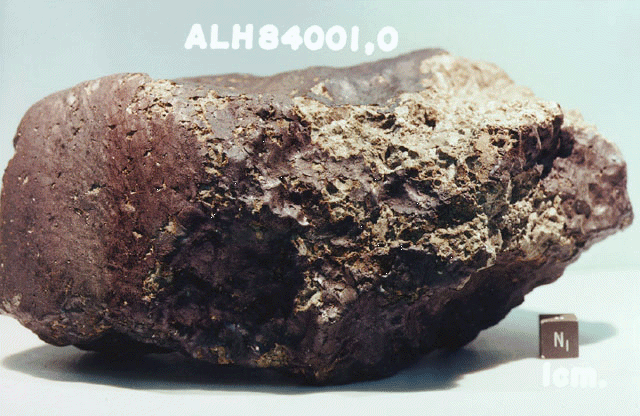
Probing the Red Planet: Finding past life at Jezero Crater
As for any consensus among scientists that signs of past or present life have been seen by Perseverance, once again, don't wait for a slam dunk observation.

Since its wheels-down landing in February of last year, NASA's Perseverance Mars rover has been busily at work, on the prowl steering itself across the Jezero Crater landscape.
A key duty of the robot is to search for signs of ancient microbial life. The Mars machinery is industriously gathering up samples of Martian rock and soil that could help tease out an answer concerning the past habitability of the Red Planet.
Perseverance is on a roll, a collectible outing to stash core samples in sealed tubes that are to eventually find their way to Earth via the Mars Sample Return program.
Related: Perseverance Mars rover photographs its own landing debris
But how tough is it to spot and sample potential past life on Mars? Perhaps the rover already has? Then there's the question of whether we need the samples back on Earth to find signs of past life, or can Perseverance, on-location, detect past or even present life with its suite of instruments?
Above all, just how hard might it be to have a consensus among scientists that, yes, signs of life, be it past or present has been observed by the rover? What's a slam dunk finding look like?
Shapes and chemical signals
"Perseverance, and any rover for that matter, would be unable to provide definitive data pertinent to evidence of past life on the Red Planet," said Jack Mustard, professor of Earth, Environmental, and Planetary Sciences at Brown University in Providence, Rhode Island.
Get the Space.com Newsletter
Breaking space news, the latest updates on rocket launches, skywatching events and more!
The instrumentation is not yet close to getting the types of measurements that would pass the high degree of skepticism present to detect life on another planet, Mustard told Space.com. "Heck, scientists cannot agree with any definitiveness on the evidence for the first life on Earth!"
For Mustard, don't anticipate slam-dunk revelations anytime soon.
"Beyond detection of complex life forms in a fossil, there is no evidence that the rover could collect," Mustard said. "Geologic morphology and chemistry too often create shapes and chemical signals that have been mistaken for past life on Earth…let alone Mars!"

Hard to discern
Similar in view is Steve Ruff, a planetary geologist with a focus on the mineralogy of Mars at Arizona State University in Tempe.
Ruff is also "Mars Guy," producing the hit video series that is following the exploration of Jezero Crater by the Perseverance rover and the Ingenuity helicopter, serving up science, engineering, and search for life on Mars observations using a novel in-person experience.
"We need samples back to find signs of life because the life we can reasonably expect to find will be microscopic single-celled organisms that lived billions of years ago," Ruff said. "Their traces, whether organic or textural, will be hard to discern with the available instruments and capabilities of Perseverance."
Ruff says that the sample preparation and analytical techniques needed to prove life was present at the rover's roaming site are only available on Earth.
"Larger and easier to find multicellular organisms probably never evolved on Mars. It took billions of years for that to happen on Earth, where the conditions have been much more stable and hospitable," Ruff told Space.com.
Inhospitable conditions
There's no expectation that the surface samples that Perseverance can acquire, even down to the several centimeters it can drill, Ruff advised, "will have living or recently dead microbes given the totally inhospitable conditions, starting with the complete lack of bio-available moisture."
Ruff added, however, that Perseverance has two instruments that can detect and identify organic molecules. "So conceivably it could identify present life, but its presence is exceedingly unlikely," he said.
As for any consensus among scientists that signs of past or present life have been seen by Perseverance, once again, don't wait for a slam dunk observation.
"The experience with the Mars meteorite ALH84001 demonstrated how hard it's going to be to prove there was life on Mars," Ruff said. "I think it will require the combination of organic molecules in structures that likely were formed or influenced by microbes, like stromatolites, to convince scientists, including me, that Martian life was present."

Restructured sample return program
In late July, NASA and the European Space Agency (ESA) restructured the multi-faceted Mars Sample Return effort, a move touted as reducing the complexity of that mission while increasing the chance for success.
Part of that shift in gears was ditching an ESA-provided Sample Fetch Rover or its associated second lander. In its place, the project now embraces a Sample Retrieval Lander outfitted with the Mars Ascent Vehicle for shooting off samples, but also adds two sample recovery helicopters, and a new ESA-provided Sample Transfer Arm.
It has also been recognized that given the way Perseverance has held up, a lower-risk strategy having that rover personally deliver them to the Mars Ascent Vehicle is the way to go. The prize package of Mars goodies would land in Utah desert in the 2030's.
This "re-organized" Mars Sample Return endeavor stirs up mixed feelings.
Wanted: multiple lines of evidence
Amy Williams is an assistant professor in the geological sciences at the University of Florida in Gainesville. As for her Mars credentials, Williams is both a NASA Perseverance and Curiosity rover participating scientist.
Williams said that there are certainly categories of biosignatures (evidence of life) that could be detected with the Perseverance instrument suite, such as distinct preserved microbial mat morphologies, like stromatolites.
"However, even with a macroscale texture like that, I think most astrobiologists would require multiple lines of evidence to confirm the biogenicity [the state or property of being biogenic] assessment and refute any abiologic
[not associated with or derived from living organisms] origin for the feature," Williams said.
"Sample return is the way to get those multiple lines of evidence," Williams added, "as we have far greater analytical capabilities in labs here than we'll be able to send on a rover."

Triaging targets
The Perseverance rover instrument suite is meant to triage targets for sampling and return, and provide environmental context for those samples, said Williams. "For example, if we think we see a biogenic stromatolite, we can ask the right questions about context: is this the right ancient environment for these structures to form, were the conditions appropriate, etc."
Once again, what a slam dunk would look like evokes a paraphrasing of astronomer Carl Sagan's outlook that to make the extraordinary claim like finding evidence for life on Mars, we'll need extraordinary evidence.
"That comes from multiple corresponding and interweaving lines of analytical and contextual evidence, achievable through returning those samples to Earth for a thorough laboratory assessment," Williams said. Rover instrument payloads are limited by mass and power constraints, and it's not possible to send every laboratory technique to Mars for this kind of corroboration.
"I think it is possible to achieve majority community consensus on a positive biosignature detection, but it will require an extraordinary confluence of evidence," Williams said. "This would be such an important discovery that we must get it right!"

Reduce science return
"It makes good sense to simplify the sample transfer part of the process, and reducing the number of launches/landings and untested technology, the British Rover for the Fetch portion, reduces risk and makes sense," said Mustard of Brown University.
"However, by having Perseverance deliver the samples to the return capsule, the Perseverance will have to stay fixed in the landing area for sample transfer and will be unable to continue exploring Nili Planum as originally envisioned," Mustard added. "This will significantly reduce the science return from the rover and put the science of the 'Midway region' [outside the Jezero Crater floor] well into the future. I am also skeptical of the use of copters to grab and deliver the core samples to the return vehicle," he said.
Simpler and less costly
From ASU's Ruff: "I think the new plan to exclude the fetch rover and its lander and rely on Perseverance to deliver the samples to the Mars Ascent Vehicle, backed up by two Ingenuity-class helicopters, actually makes it more likely that it will happen. This approach is simpler and much less costly, so this makes it more doable," he said.
Williams of the University of Florida said that it appears that NASA and ESA are responding to a rapidly changing situation with creativity and flexibility. "They are planning for success by building in redundancies — sample delivery to the ascent vehicle with Perseverance as well as helicopters — and leveraging our evolving technologies, such as the development of these helicopters based on Ingenuity heritage."
Additionally, our knowledge of spacecraft performance on Mars is stellar. For instance, the Curiosity Mars rover at Gale crater just celebrated a decade on Mars.
"So we know these spacecraft lifespans are achievable," Williams concluded. "I am pleased to see our space agencies continue to prioritize Mars Sample Return, as those precious samples will revolutionize our understanding of both Mars and Earth!"
Follow us on Twitter @Spacedotcom or on Facebook.
Join our Space Forums to keep talking space on the latest missions, night sky and more! And if you have a news tip, correction or comment, let us know at: community@space.com.

Leonard David is an award-winning space journalist who has been reporting on space activities for more than 50 years. Currently writing as Space.com's Space Insider Columnist among his other projects, Leonard has authored numerous books on space exploration, Mars missions and more, with his latest being "Moon Rush: The New Space Race" published in 2019 by National Geographic. He also wrote "Mars: Our Future on the Red Planet" released in 2016 by National Geographic. Leonard has served as a correspondent for SpaceNews, Scientific American and Aerospace America for the AIAA. He has received many awards, including the first Ordway Award for Sustained Excellence in Spaceflight History in 2015 at the AAS Wernher von Braun Memorial Symposium. You can find out Leonard's latest project at his website and on Twitter.